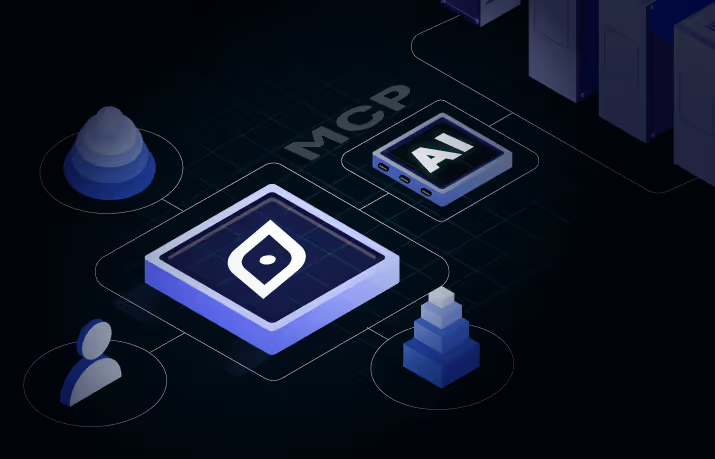Breaking Down the 6 Components of Strategic Talent Management that Actually Work
Attracting and retaining top talent has never been more important, and effective strategic talent management is the key to achieving this goal. It involves attracting, selecting, developing, retaining, and assessing top talent in an organization.
Effective strategic talent management can help businesses gain a competitive edge in today’s fast-paced market.
Building a Strong Strategic Talent Management Foundation for Long-Term Growth
Draup, as a data-driven AI platform, understands the significance of strategic talent management and has identified 6 critical components businesses need to consider for successful strategic talent management.
1. Strategic Workforce Planning
Planning ensures the organization has the right people with the right skills at the right time. This involves identifying the organization’s current and future talent needs and developing a plan to fulfill them.
Businesses must determine the skills and competencies required for each role and evaluate their current workforce to identify skill gaps. To do this effectively, businesses can:
- Conduct job analysis to identify the necessary skills and competencies for each role.
- Develop competency models that outline the skills, knowledge, and behaviors required for success in each role.
- Use performance reviews and feedback to assess current employee skills and competencies.
- Analyze employee job performance data to identify areas where additional training or skill development is needed.
- Compare the current workforce’s skills to the desired competency models to identify skill gaps.
- Create individual development plans for employees and to inform hiring decisions using the gathered information.
2. Attracting Top Talents
The war for talent is more intense than ever, and attracting top talent is now crucial to an organization’s success. As part of strategic talent management, companies must create a compelling employer brand, use social media and other digital platforms, and offer competitive salaries and benefits to attract top talent. According to a recent survey, 80% of job seekers believe employer reputation is essential when considering job opportunities.
Strategic talent management also involves communicating a company’s values, culture, and work environment to attract the right candidates. A proactive and strategic approach to talent attraction ensures long-term success in a highly competitive market.
3. Hiring the Right Fit
Selecting suitable candidates involves identifying the right candidates for the right job based on their skills, knowledge, and experience. It requires effective recruitment strategies that evaluate candidates’ skills, experience, and cultural fit.
Businesses need to develop selection criteria that align with business goals and ensure that they hire the right candidates for each role.
4. Developing Employee Skills
Developing employees based on their skills is a crucial aspect of strategic talent management that can make or break a company’s success. This involves customizing training programs to align with the organization’s objectives and profile.
To achieve this, businesses can follow these steps:
- Conducting orientation and onboarding programs to introduce employees to the company culture and values.
- Providing skill enhancement training to improve employee performance.
- Counseling, guiding and educating employees based on their job profile to ensure they are aligned with organizational goals.
- Implementing job rotation, which involves rotating employees within different teams and projects to keep them motivated and rejuvenated.
By continuously developing employee skills, businesses can maintain a flexible workforce that can be easily transferred from one job to another within the organization. This not only benefits the company but also increases employees’ career development opportunities, promoting employee retention.
5. Employee Retention
According to a survey conducted by SHRM, the average cost-per-hire is USD 4,129, and the average time to fill a position is 36 days. This emphasizes the importance of developing effective retention strategies as part of strategic talent management to reduce employee turnover and minimize the cost of replacing employees.
To retain your employees, you must ensure they are in the right roles that align with their skills and aspirations. This not only motivates them but also helps them achieve their goals, key outcomes of effective strategic talent management.
There are many ways to retain your employees and keep them engaged, such as:
- Implementing participative decision-making processes
- Acknowledging and rewarding employee contributions and efforts
- Offering promotions and attractive employee benefits
- Fostering employee engagement to meet business objectives.
By embedding these initiatives into strategic talent management, companies can ensure a driven and committed workforce, leading to long-term business success.
6. Conducting Assessment
Assessment involves measuring the effectiveness of strategic talent management and identifying areas for improvement. It requires collecting data on key metrics, analyzing the data, and using the insights to make informed decisions.
Businesses must provide employees with regular feedback and performance evaluations to ensure they meet business goals and objectives.
Draup’s data-driven platform provides organizations with real-time insights to help them make informed strategic talent management decisions and improve their overall success. With Draup, businesses can access detailed talent profiles, including skills, experience, and job performance data. This information can be used to identify skill gaps, develop customized training programs, and make informed hiring decisions.










.svg)
















.svg)





.svg)





.svg)
